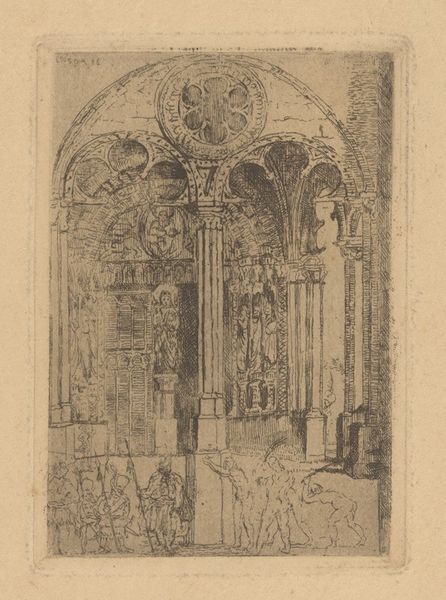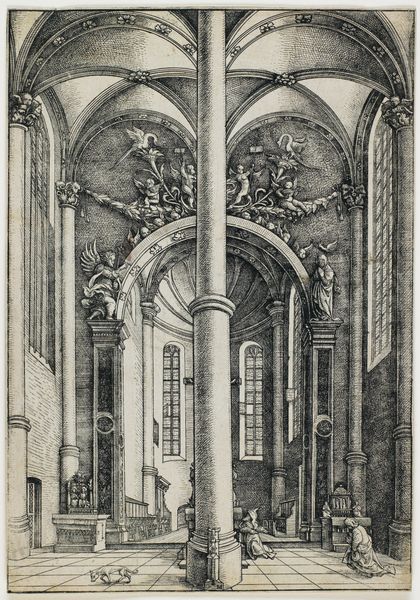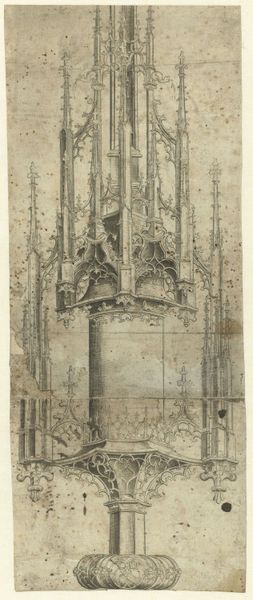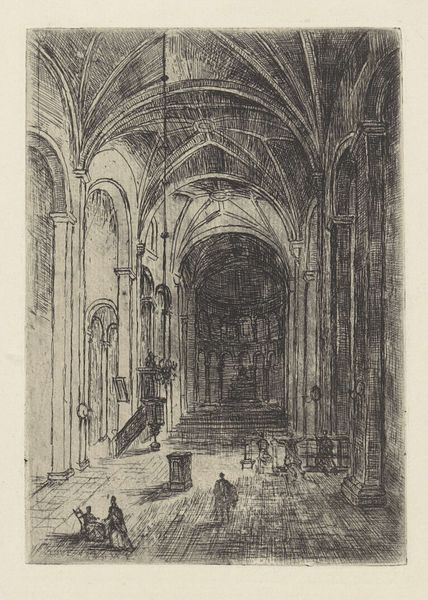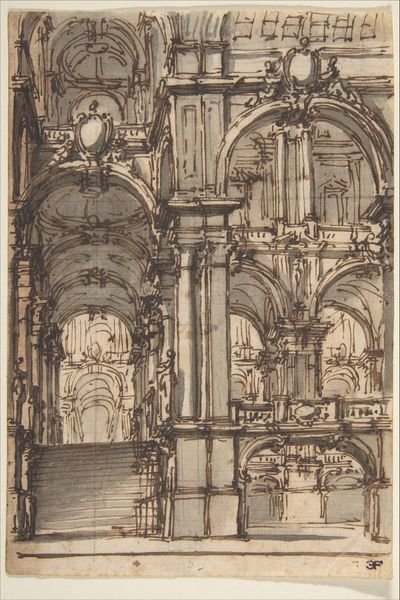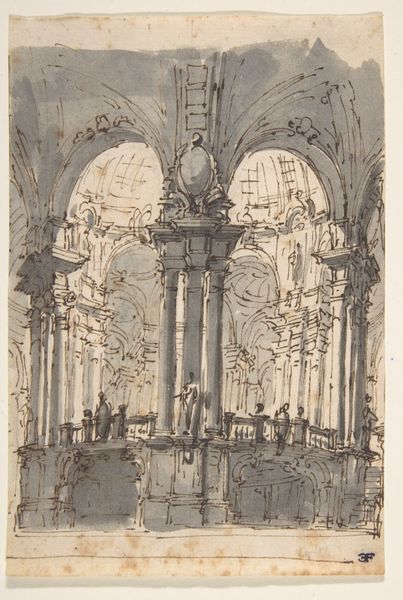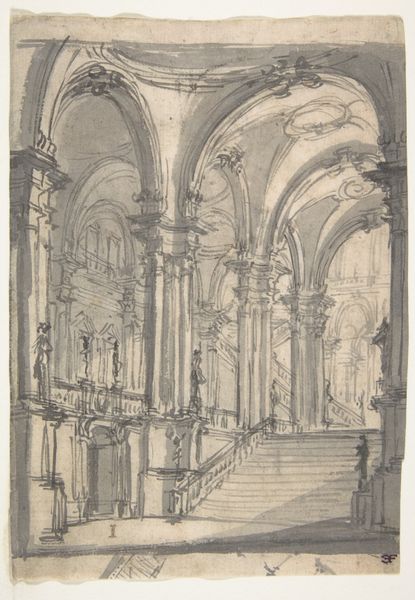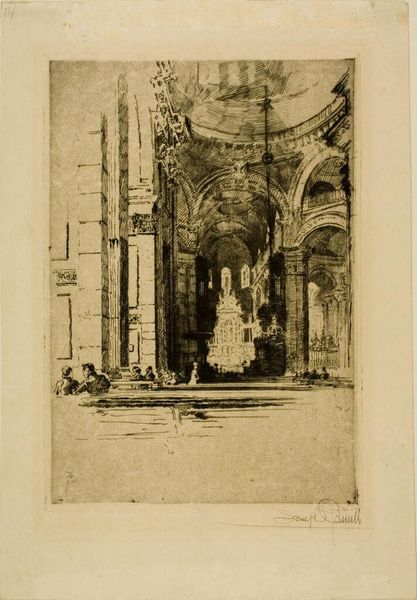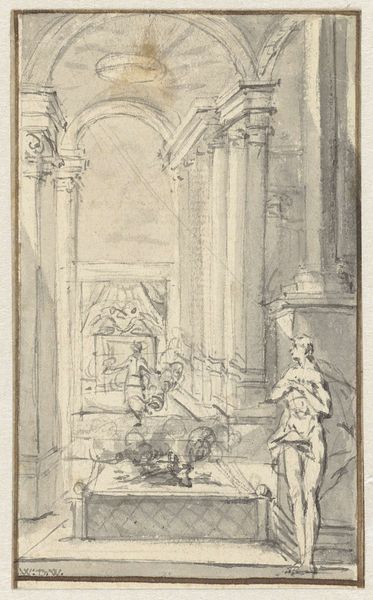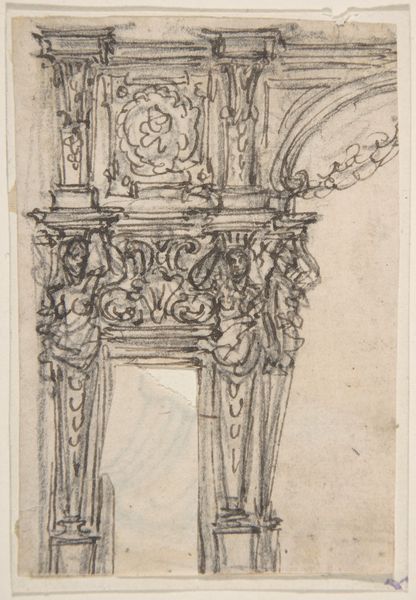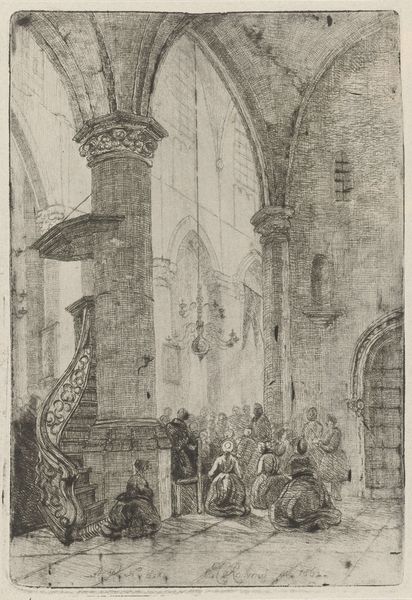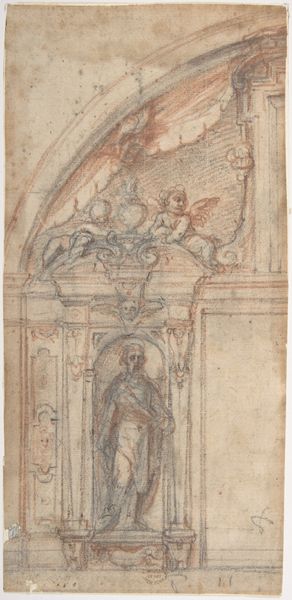
drawing, print, etching, ink
#
drawing
# print
#
etching
#
charcoal drawing
#
figuration
#
ink
#
history-painting
#
academic-art
#
mixed medium
#
mixed media
Copyright: Public Domain: Artvee
Curator: The work before us is "The Flagellation," an etching by James Ensor, dating to 1886. Editor: There’s a palpable sense of struggle embedded in that scene—almost as if the very architecture is being strained by the weight of violence. Curator: Ensor often employed religious themes to explore societal critiques. "The Flagellation," beyond its biblical context, represents the persecution and suffering endured by marginalized groups. Consider the composition. Editor: Right—the way the figures at the bottom seem crushed between the ornate structure above and the harsh reality of their circumstances—it’s claustrophobic, hinting at social constraint. Who holds power, and how do they inflict suffering? The symbol systems become a question: who's Christ in this context, and who are the crucifiers? Curator: The gothic architecture is deliberately overwhelming; it stands as a symbol of established order. Ensor highlights its oppressive aspects by setting the flagellation in such imposing architectural stage, echoing centuries of oppression sanctified by tradition. Editor: And you can almost hear the echo, the enduring scream through history, right? That repetition of cruelty becomes almost liturgical within those arches. Ensor is pointing to how history repeats itself, not just in a religious narrative, but across eras and social classes. It transcends the spiritual, becoming a commentary on continuous, cyclical patterns of injustice. Curator: Precisely! He is using the flagellation as an iconographic stand-in for the pain perpetuated by systemic structures of authority. The masks, if we can look past the religious references and into Ensor's cultural context, appear everywhere in Ensor’s work as a commentary on societal performance, the guises under which cruelty and power are concealed. Editor: Ultimately, Ensor pushes us to question not just the historical event but the present reality, prompting us to reflect on how systems continue to flagellate—figuratively or literally—the vulnerable and the oppressed. It demands engagement rather than passive observation. Curator: An enduring mirror, revealing not just historical pain, but present-day reflections, don’t you agree? Editor: Yes, exactly. A poignant reminder of the burdens we continue to bear—both individually and collectively.
Comments
No comments
Be the first to comment and join the conversation on the ultimate creative platform.
